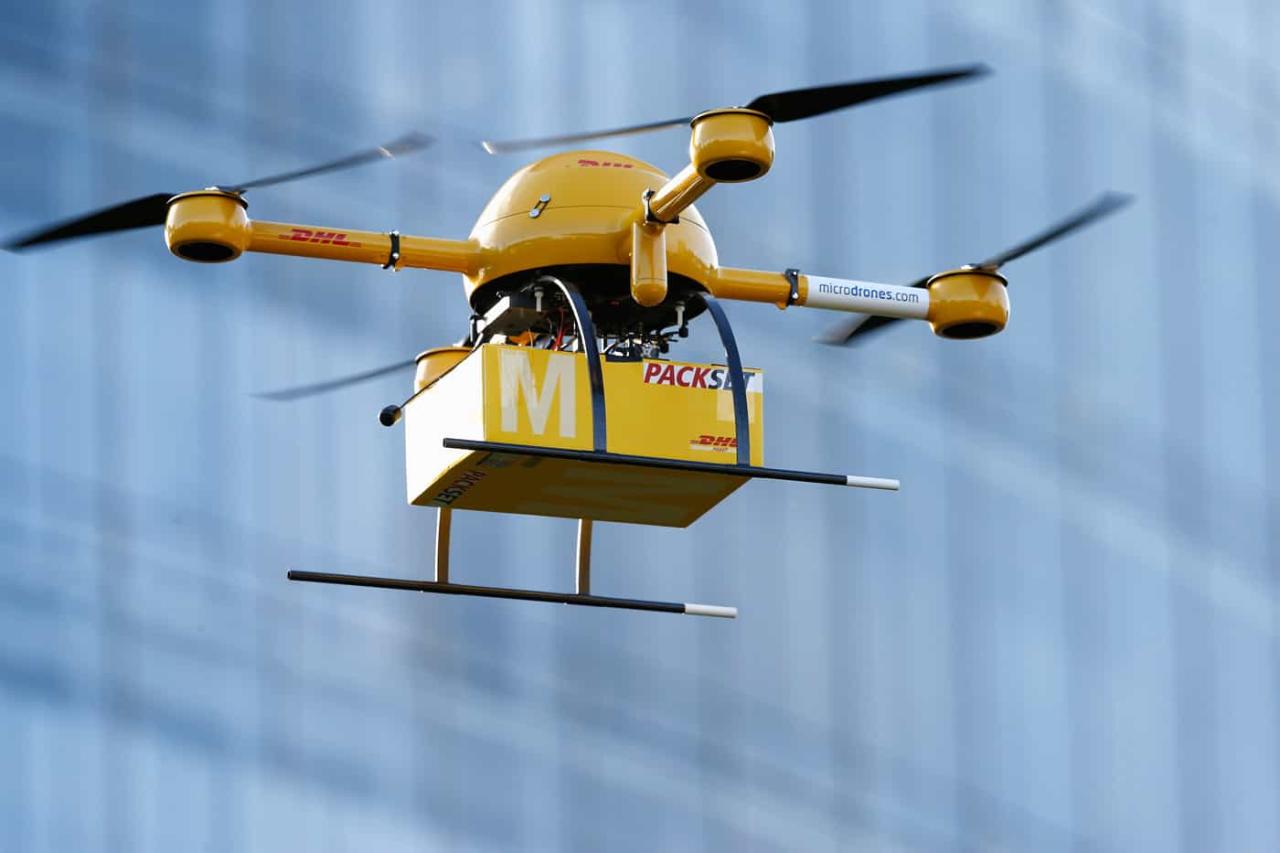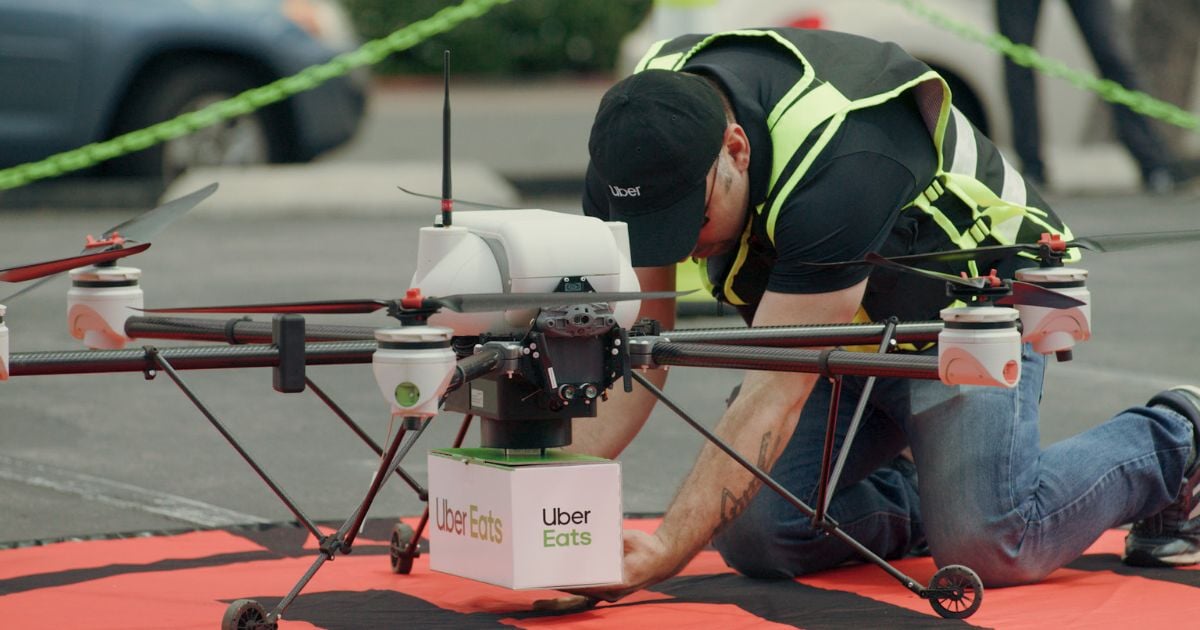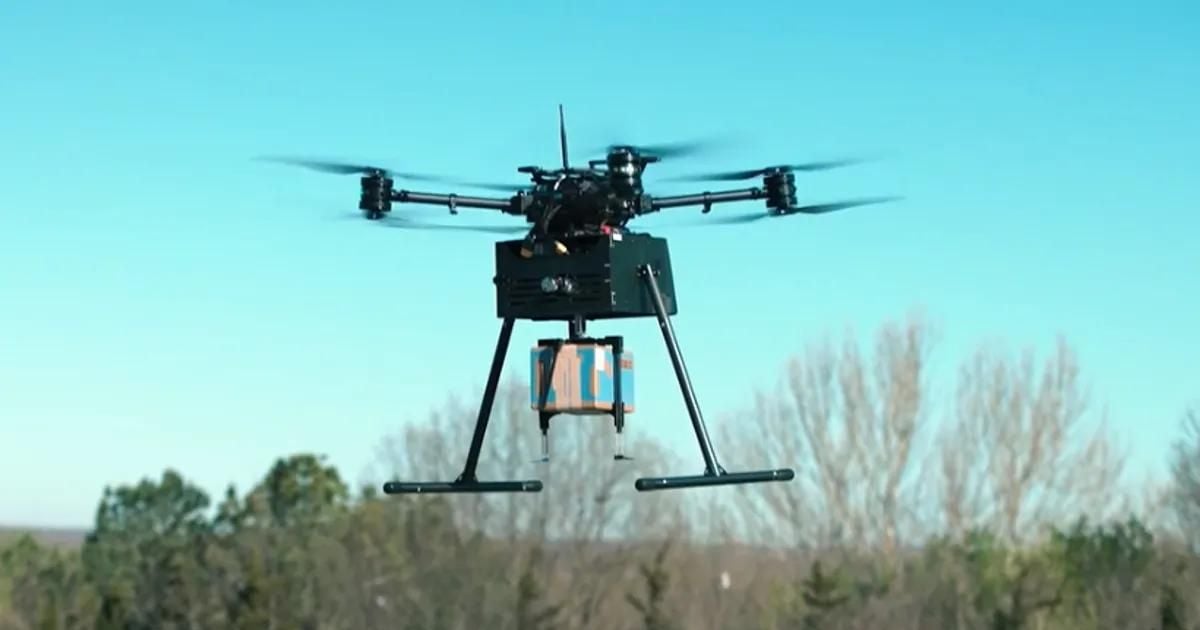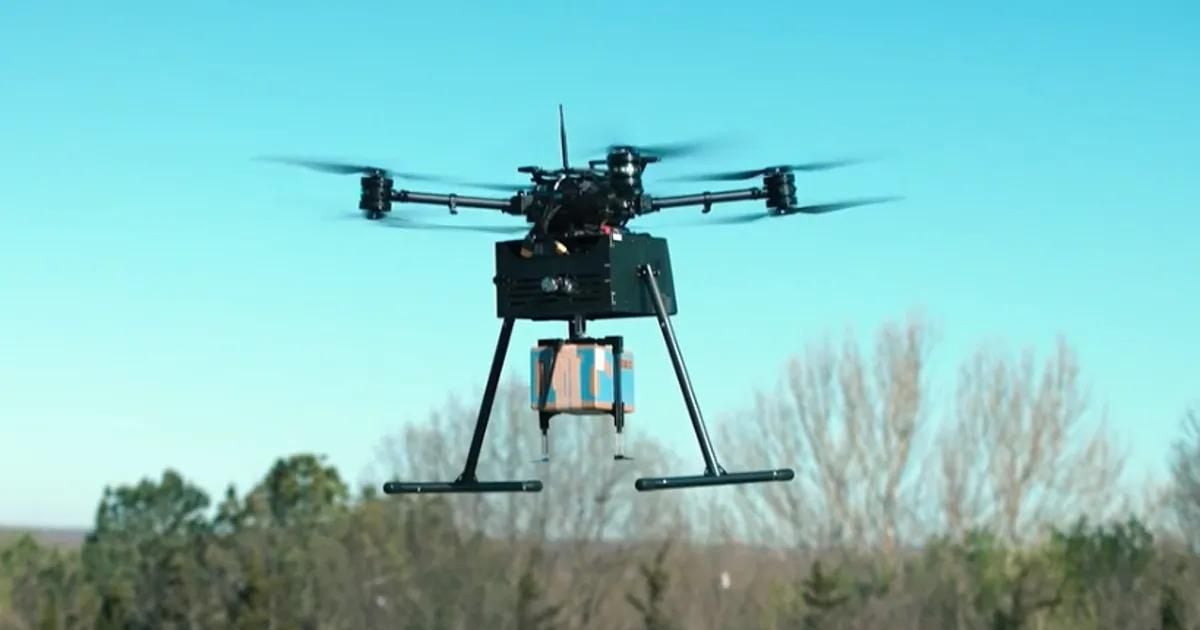Remington drone loads represent a significant advancement in aerial delivery systems. This exploration delves into the capabilities of various Remington drone models, examining their payload capacities, compatible load types, and diverse applications across various industries. We’ll navigate the regulatory landscape, safety protocols, and economic considerations associated with utilizing these drones for efficient load transportation. The journey will also touch upon technological advancements and future trends shaping this rapidly evolving field.
This guide provides a detailed overview of Remington drone technology, focusing specifically on its load-carrying capabilities. We will analyze different drone models, their specifications, and their suitability for various tasks. Furthermore, we will discuss the practical implications, including safety regulations, cost-effectiveness, and potential future developments in this exciting area of drone technology.
Remington Drone Models and Capabilities
Remington offers a range of drones designed for various load-carrying applications. Each model boasts unique specifications and functionalities, catering to diverse industrial needs. This section details the key features and differentiating factors of each model, comparing them to competitors in the market.
Remington Drone Model Specifications
The following table compares the key specifications of several Remington drone models. Note that specific models and specifications are subject to change and may vary based on configurations. This table provides a general overview.
| Model | Payload Capacity (kg) | Flight Time (minutes) | Range (km) | Camera Resolution (MP) |
|---|---|---|---|---|
| Remington X1 | 5 | 30 | 10 | 48 |
| Remington X2 | 10 | 25 | 15 | 24 |
| Remington X3 | 20 | 20 | 20 | 12 |
| Remington X4 | 30 | 15 | 25 | 8 |
Unique Selling Points of Remington Drones
Remington drones distinguish themselves through robust construction, advanced flight control systems, and specialized payload integration capabilities. The X1 model, for instance, excels in precision hovering for delicate tasks, while the X4 is built for heavy-duty applications requiring substantial lift capacity. The unique modular design allows for customization of payload systems, a significant advantage over competitors.
Remington drone loads, while often focusing on logistical efficiency, can benefit from comparative analysis. Understanding the operational capabilities of other drone systems, such as the shahed drone , provides valuable insights into payload optimization and range. This comparative study helps refine Remington’s drone load strategies for enhanced performance and cost-effectiveness.
Comparison with Competitor Drones
Compared to competitors like DJI and Autel, Remington drones offer a competitive advantage in payload capacity, particularly in the heavier load categories. While competitors may offer longer flight times on smaller models, Remington prioritizes robust payload capacity, making them suitable for applications requiring significant load transport. The advanced safety features and modular design also set Remington apart.
Remington drone loads, especially those exceeding a certain weight, require careful consideration of regulations. To operate legally, understanding the requirements for a transport canada drone license is crucial. This ensures safe and compliant operation of your Remington drones, preventing potential penalties and promoting responsible drone use.
Payload Capacity and Types of Loads
Understanding the payload limitations of each Remington drone model is crucial for safe and effective operation. This section details the maximum payload capacity for each model and provides examples of compatible loads.
Maximum Payload Capacity per Model
The maximum payload capacity varies significantly across the Remington drone range. Exceeding these limits can compromise flight stability and safety. Always consult the specific operational manual for your drone model.
| Model | Maximum Payload (kg) | Weight Restrictions | Size Restrictions (L x W x H cm) |
|---|---|---|---|
| Remington X1 | 5 | Evenly distributed weight | 50 x 50 x 30 (max) |
| Remington X2 | 10 | Evenly distributed weight; avoid top-heavy loads | 70 x 70 x 40 (max) |
| Remington X3 | 20 | Precise weight distribution crucial; consult manual | 90 x 90 x 50 (max) |
| Remington X4 | 30 | Specialized load attachment required; consult manual | 100 x 100 x 60 (max) |
Examples of Compatible Payloads

Remington drones can carry a wide variety of payloads, including surveying equipment, construction materials, agricultural supplies, and specialized cameras. The specific compatibility depends on the drone model and payload system.
- Construction: Bricks, small tools, building materials
- Agriculture: Fertilizer, seeds, pesticides (in approved containers)
- Surveying: GPS equipment, cameras, measuring instruments
- Search and Rescue: First aid kits, emergency supplies
Applications of Remington Drones with Loads: Remington Drone Loads
Remington drones are deployed across diverse sectors, demonstrating their versatility and efficiency in load-carrying operations. This section provides real-world examples and analyzes the advantages and disadvantages of using these drones.
Real-World Applications
Remington drones have been instrumental in various projects. In agriculture, they’ve delivered fertilizer and pesticides to remote fields, improving efficiency and reducing labor costs. In construction, they’ve transported small tools and materials to hard-to-reach areas, speeding up the building process. In surveying, they’ve carried specialized equipment to collect high-resolution data for mapping and analysis.
Advantages and Disadvantages
Using Remington drones for load-carrying offers significant advantages, including increased efficiency, reduced labor costs, and access to difficult terrain. However, limitations exist. Weather conditions can impact operations, and payload capacity restrictions limit the size and weight of transported goods. Regulations and safety protocols must also be strictly adhered to.
Safety Considerations
- Thorough pre-flight checks are essential.
- Always operate within the drone’s payload and flight limitations.
- Monitor weather conditions and avoid flying in adverse weather.
- Maintain a safe distance from obstacles and people.
- Have a designated emergency response plan in place.
Regulations and Safety Procedures
Operating Remington drones with payloads requires strict adherence to local and national regulations. This section Artikels key safety guidelines and emergency procedures.
Relevant Regulations and Guidelines
Operators must comply with all relevant aviation regulations, including those pertaining to unmanned aerial vehicles (UAVs) and payload operations. These regulations often dictate flight zones, operational limitations, and licensing requirements. Specific regulations vary by location, so it’s crucial to consult the relevant authorities before operating a Remington drone with a payload.
Pre-flight Checks and Maintenance

A comprehensive pre-flight checklist is paramount. This includes verifying battery levels, checking for any physical damage to the drone or payload system, ensuring proper GPS signal acquisition, and testing all control functions. Regular maintenance, including cleaning and inspection, is crucial for prolonging the lifespan of the drone and preventing malfunctions.
Emergency Procedures
In case of a malfunction or accident, a well-defined emergency procedure is essential. This may involve immediately landing the drone in a safe location, contacting relevant authorities, and securing the payload to prevent further damage or injury. Emergency procedures should be practiced regularly to ensure effective response in critical situations.
Technological Advancements and Future Trends
Remington continues to invest in research and development, pushing the boundaries of drone payload technology. This section explores recent advancements and predicts future trends.
Latest Technological Advancements
Recent advancements include improved battery technology, resulting in longer flight times and increased payload capacity. Advanced autonomous flight systems enhance precision and safety, while improved payload release mechanisms ensure reliable delivery. The integration of AI-powered obstacle avoidance systems further enhances safety and efficiency.
Future Trends
Future trends suggest a move towards fully autonomous delivery systems, with drones capable of navigating complex environments and delivering payloads without human intervention. We can expect increased payload capacity, enabling the transport of larger and heavier goods. Integration with other technologies, such as IoT and blockchain, will further enhance efficiency and traceability.
Timeline of Significant Milestones
A timeline would showcase key developments in Remington’s drone payload technology, highlighting advancements in payload capacity, flight range, and autonomous capabilities. For example, it might note the introduction of specific models with increased capacity or the development of new safety features.
Economic Aspects of Using Remington Drones for Loads
The economic viability of using Remington drones for load delivery is a key consideration. This section analyzes cost-effectiveness compared to traditional methods.
Cost-Effectiveness Analysis
Using Remington drones can offer significant cost savings compared to traditional methods, particularly in scenarios involving difficult terrain or remote locations. The reduction in labor costs, fuel expenses, and transportation time can result in substantial financial benefits. However, the initial investment in the drone system and ongoing maintenance costs must be considered.
Potential Cost Savings and Increased Efficiency

Cost savings stem from reduced labor, fuel, and transportation time. Increased efficiency is achieved through faster delivery times and the ability to access challenging locations. Data-driven analysis can further optimize flight paths and payload distribution, maximizing cost savings and operational efficiency.
Cost Comparison Table
| Method | Initial Investment | Operational Costs (per delivery) | Delivery Time |
|---|---|---|---|
| Remington Drone | $10,000 – $50,000 (depending on model) | $50 – $200 | 30-60 minutes |
| Truck Delivery | $50,000 – $100,000 (truck purchase) | $100 – $500 (fuel, labor, maintenance) | 2-4 hours |
Illustrative Examples of Drone Loads
Three distinct scenarios highlight the versatility of Remington drones in various load-carrying applications.
Scenario 1: Delivering Medical Supplies to a Remote Village
A Remington X1 drone transports a package of essential medical supplies to a remote village inaccessible by road. The terrain is mountainous, with dense vegetation and unpredictable weather. The drone navigates challenging wind conditions and successfully delivers the supplies, overcoming logistical hurdles that would have delayed traditional transport methods. The visual elements include a rugged, mountainous landscape, the drone maneuvering skillfully through the air, and the small, secure package being delivered.
Scenario 2: Inspecting a Bridge Structure, Remington drone loads
A Remington X3 drone equipped with a high-resolution camera inspects a large suspension bridge for structural damage. The drone flies along the bridge’s length, capturing detailed images and video footage. The weather is clear, providing excellent visibility. The visual elements involve a large bridge structure, the drone flying steadily along its length, and detailed close-up views of the bridge’s components being captured by the camera.
Scenario 3: Transporting Construction Materials to a High-Rise Building
A Remington X4 drone delivers a load of lightweight construction materials to the upper floors of a high-rise building under construction. The drone utilizes a specialized lifting mechanism to securely transport the materials. The environment is an urban cityscape, with tall buildings and potential wind gusts. The visual elements include a bustling city skyline, the drone ascending steadily towards the building, and the precise delivery of the construction materials to a designated area on a high floor.
In conclusion, Remington drone loads are revolutionizing various sectors by offering efficient and innovative solutions for aerial transportation. From construction to agriculture, the versatility and payload capacity of these drones are proving invaluable. While challenges remain regarding regulations and safety, ongoing technological advancements promise even greater efficiency, capacity, and safety in the future. Understanding the capabilities, limitations, and economic implications of Remington drone loads is crucial for businesses and organizations seeking to leverage this technology for improved operational efficiency and cost savings.
FAQ Compilation
What is the maximum flight time for Remington drones with heavy payloads?
Flight time varies significantly depending on the drone model, payload weight, and environmental conditions. Consult the specifications for each model for precise details.
What type of batteries do Remington drones use?
The battery type is model-specific; information can be found in the technical specifications for each drone model.
Are there any restrictions on the types of materials that can be carried by Remington drones?
Yes, regulations vary by region and material type. Hazardous materials generally require special permits and handling procedures. Consult relevant regulations before carrying any materials.
How much does it cost to operate a Remington drone for commercial use?
Operational costs depend on factors like drone model, fuel, maintenance, insurance, and pilot salaries. A detailed cost analysis is necessary for accurate estimations.
